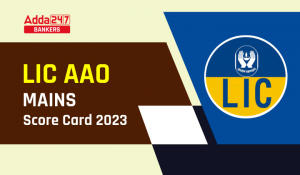There are usually five types of insurance policies. They are as follows:
- Whole life
- Term Insurance
- Life annuity
- Endowment
- Investment – linked
- Medical and health
Whole life Insurance:
Life insurance policy that normally covers an individual until his or her death, unless it lapses due to non-payment of premium or is cancelled, builds up a cash value (called cash surrender value),pays a fixed death benefit. The insured or policyholder may obtain a loan (called policy loan) against the accumulated cash value. Also called continuous premium whole life insurance, ordinary life insurance, permanent life insurance, or straight life insurance.
Term Insurance:
Term insurance is the most traditional life insurance policy wherein the insured gets death benefit if any contingency happens within the policy term. The insured is, however, not entitled to receive any survival benefit if he outlives the policy term.
Term insurance policies are available in the range of 10-30 years term. These plans are relatively cheaper than endowment policies, money back policies and ULIPs. The benefits in a term insurance policy can be availed only in the event of the death of the insured.
Simplest and usually the cheapest type of life insurance that stays in effect for a specified period or until a certain age of the insured. It pays the face amount of the policy in case the insured dies within the coverage period (term) but pays nothing if he or she outlives it. Also, (unlike in whole life insurance) whereas it premium cost is low in younger years, it generally increases rapidly with the age of the insured. Term life insurance is used commonly as an insurance cover for a loan repayment or post-death liabilities such as estate taxes.
Life Annuity:
Life annuity is an insurance product in which the annuitant receives a series of future payments for his/her lifetime after retirement. The annuitant has to pay a predetermined payment or a series of regular payments till he/she is working.
Life annuity provides financial support to the retires and helps them maintain a similar standard of living as before retirement. In a life annuity the uncertainty of the annuitant’s life span is shifted to the insurer.
Series of payments at fixed intervals, guaranteed for a fixed number of years or the lifetime of one or more individuals. Similar to a pension, the money is paid out of an investment contract under which the annuitant(s) deposit certain sums (in a lump sum or in instalments) with an annuity guarantor (usually a government agency or an insurance firm). The amount paid back includes principal and interest, either or both of which (depending on the local regulations) may be tax exempt. An annuity is not an insurance policy but a tax-shelter.
Endowment Insurance:
Life insurance policy that pays the assured sum (face amount) on a fixed date or upon the death of the insured, whichever comes earlier. Endowment policies carry premiums higher than those on conventional whole life policies and term insurance, but are useful in meeting special lump sum needs such as college expenses or for buying a retirement home. Also called endowment life policy or endowment policy.
Health Insurance and Medical insurance
Health insurance is a type of insurance coverage that pays for medical and surgical expenses that are incurred by the insured. Health insurance can either reimburse the insured for expenses incurred from illness or injury or pay the care provider directly. Health insurance is often included in employer benefit packages as a means of enticing quality employees.


 LIC AAO Cut Off 2023 Out, Check Category...
LIC AAO Cut Off 2023 Out, Check Category...
 LIC AAO Score Card 2023 Out, Check Final...
LIC AAO Score Card 2023 Out, Check Final...
 LIC AAO Interview Call Letter 2023 Out, ...
LIC AAO Interview Call Letter 2023 Out, ...



